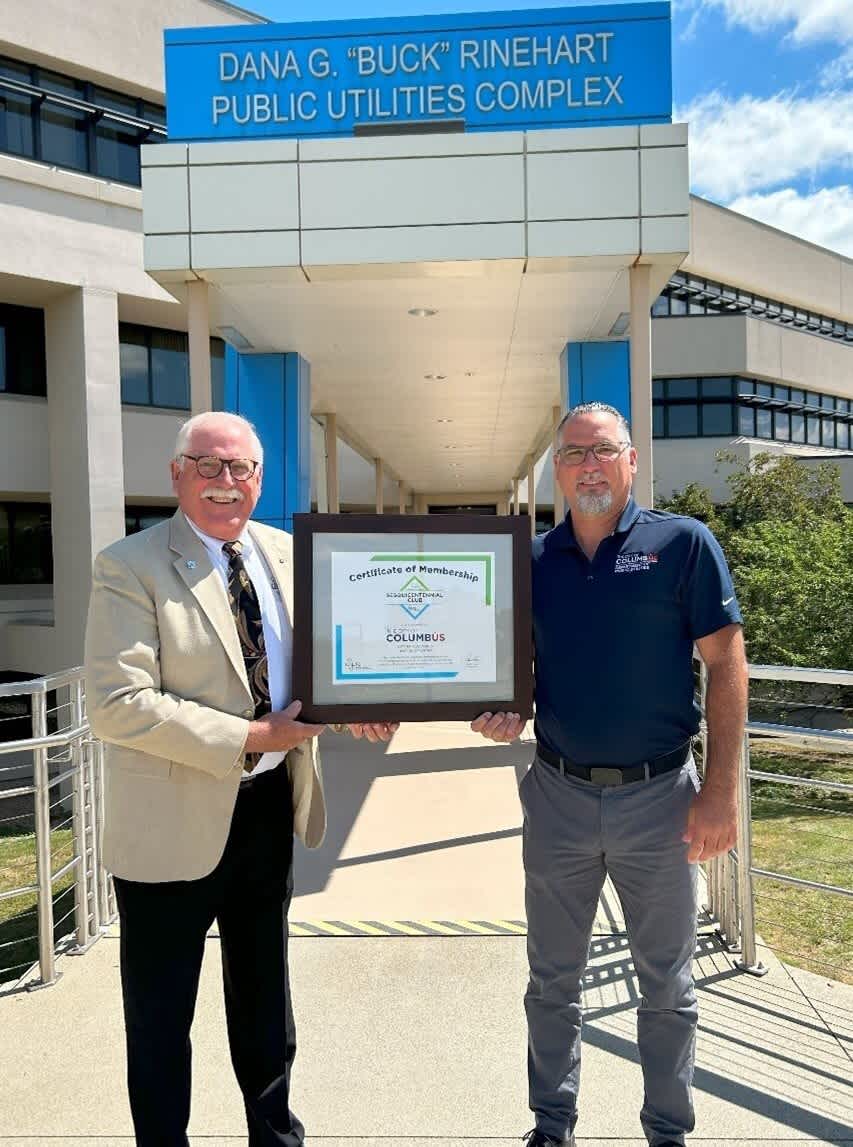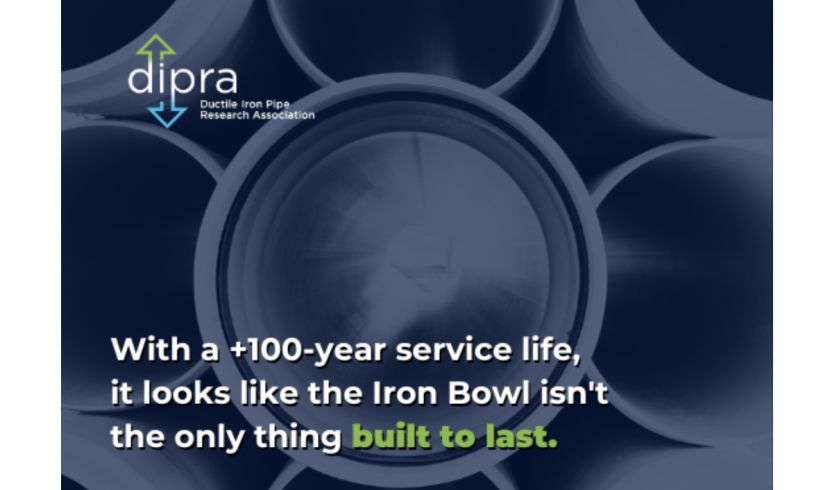
...PVC pipe industry is encouraging users to increase the allowable wall stress in the pipe being specified, which will shorten the pipe’s life.
There is a growing legacy of obfuscation from the PVC pipe industry. Unable to persuade some municipalities of the relative engineering merits of their product, they lobby state legislatures to pass laws that would force those locales to use PVC pipe under the guise of “open competition,” creating precisely the opposite effect. They have funded a report that distorts its competition under a condescending pretext of environmental superiority. And, they try to make us think their products can do more than before by changing definitions and making design criteria less stringent. In short, the PVC pipe industry makes factual information hard to find.
One example is found by review of the changes to the standards for PVC pipe over the years. The pipe hasn’t changed. There were no improvements to the PVC material used to make AWWA C900 water pipe. DR 18 PVC has exactly the same dimensions as when the first AWWA standard was issued in 1975, but now, the Pressure Class has changed from 150 psi to 235 psi! The pipe is the same, but the magnitude of the pressure printed on the outside of the pipe increased by 57%. Why?
Change in Standards
The original AWWA C900 standard covered smaller sized distribution pipe (12-inch and smaller) and had defined the term Pressure Class as “(t)he working-pressure rating of a specific pipe for water service at a certain temperature.” In that and subsequent revisions, the Pressure Class was determined by applying a factor of safety of 2.5 to the sum of the working pressure plus a surge allowance. For all PVC pipe, the class is a function of its Dimension Ratio, or DR value and, for 32 years C900 DR 18 PVC was Pressure Class 150. This meant the pipe was classified to carry 150 psi as a working pressure, but was designed to accommodate an additional surge pressure based on a flow rate of 2 feet per second (fps),,,.
A companion standard, AWWA C905, was introduced in 1998 to address “Water Transmission Pipe” in diameters of 14-inches and larger. C905 also introduced “Pressure Rated” pipe, which was defined as “(t)he nominal pressure rating of transmission pipe...using a factor of safety of 2.0.” The definition went on to note that, “(t)here is no allowance for surge pressure in the pressure rating.” Thus, in C905, DR 18 PVC was Pressure Rated at 235 psi,.
So, the “pressure class” of a pipe was referenced by its working pressure, but had a built-in allowance to handle surge pressures; while the “pressure rating” of a pipe referred to its total pressure capacity without accounting for surge pressures. …Until 2007.
Change in Design
In 2007, C900 reduced the factor of safety from 2.5 to 2.0 and eliminated the surge allowance. The design was changed to match that of C905 – less conservative and without consideration of surge pressures. But, rather than maintain consistency and call the pipe “Pressure Rated,” the definition of “Pressure Class” was changed to become, “(t)he internal working pressure design capacity...” The pressure rating of PVC is now calculated without considering a surge allowance, but the term “pressure rating” has been abandoned.
And, in 2016, C905 was abandoned, folding it into C900.
The original need for two standards was based on the idea that transmission sized pipes had different operational criteria than distribution pipes. As an example, service taps are routinely installed in distribution pipes, which is not typical of transmission mains. With Ductile iron pipe, typical service taps can be installed directly into the wall of the pipe, which is called “direct tapping.” This is the kind of tap that is used in annual tapping competitions at AWWA’s Annual Conference and Exhibition (ACE). With PVC pipe, there are limitations. AWWA C605, the installation standard for PVC pipe, specifically restricts direct tapping to 12-inch and smaller pipe that has a DR of no more than 18 and suggests, “...a reduction of line pressure during tapping,” when possible,.
The 2016 standard covers a range of sizes from 4- to 60-inches and added several new Dimension Ratios. Surge pressures are handled depending on whether they are considered to be “occasional” or “recurring.” Occasional surges are allowed to engage the quick burst strength of PVC (a higher stress capacity that would result in a quicker time to failure). For recurring surges, the pipe should be de-rated as before. Also, there is an explicit factor to use in calculating the pressure capacity of the pipe based on the anticipated temperatures, since the nominal pressure capacity is based on a temperature of 73.4-degrees F. At higher temperatures, the pressure capacity of PVC pipe decreases.
Effect of Applied Stress
PVC pipe fails under an applied stress over a period of time. The greater the stress, the sooner the pipe will fail. By decreasing the factor of safety and eliminating the surge allowance, C900 PVC pipe now has a higher value for pressure written on the outside of the pipe. What was once “Pressure Class 150” is now “Pressure Class 235.” But, operating parameters in water piping networks haven’t changed, so if a pipeline is operating at, say, 200 psi, the new standard would imply DR 18 to be more than sufficient; but, that pipe would be operating under conditions that exceed the old pressure class by 50 psi – before accounting for surge pressures.
In other words, the PVC pipe industry is encouraging users to increase the allowable wall stress in the pipe being specified, which will shorten the pipe’s life. Pretending the pipe’s capabilities have improved by lowering the design criteria in order to write a larger pressure value on the pipe doesn’t make the pipe better. It encourages users to specify a pipe class that will not have the service life they may want and will require even more attention to ensuring proper installation.
AWWA C900, “Polyvinyl Chloride (PVC) Pressure Pipe, 4-in. through 12-in., for Water,” 1975, American Water Works Association.
ANSI/AWWA C900, “Polyvinyl Chloride (PVC) Pressure Pipe, 4-in. through 12-in., for Water,” 1981, American Water Works Association.
ANSI/AWWA C900, “Polyvinyl Chloride (PVC) Pressure Pipe, 4-in. through 12-in., for Water Distribution,” 1989, American Water Works Association.
ANSI/AWWA C900, “Polyvinyl Chloride (PVC) Pressure Pipe and Fabricated Fittings, 4 In. Through 12 In. (100 mm Through 300 mm), for Water Distribution, 1997, American Water Works Association.
AWWA C905, “Polyvinyl Chloride (PVC) Water Transmission Pipe, Nominal Diameters 14-in. through 36-in., 1988, American Water Works Association.
AWWA C905, “Polyvinyl Chloride (PVC) Pressure Pipe and Fabricated Fittings, 14-in. through 48-in., for Water Transmission and Distribution,” 1997, American Water Works Association.
AWWA C900, “Polyvinyl Chloride (PVC) Pressure Pipe and Fabricated Fittings, 4 In. Through 12 In. (100 mm Through 300 mm), for Water Transmission and Distribution,” 2007, American Water Works Association.
ANSI/AWWA C605, “Underground Installation of Polyvinyl Chloride (PVC) Pressure Pipe and Fittings for Water,” 1994 and 2005, American Water Works Association.
ANSI/AWWA C605, “Underground Installation of Polyvinyl Chloride (PVC) and Molecularly Oriented Polyvinyl Chloride (PVCO) Pressure Pipe and Fittings,” 2013, American Water Works Association.






